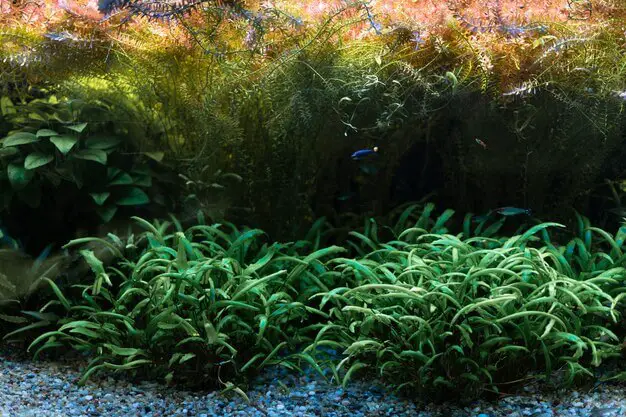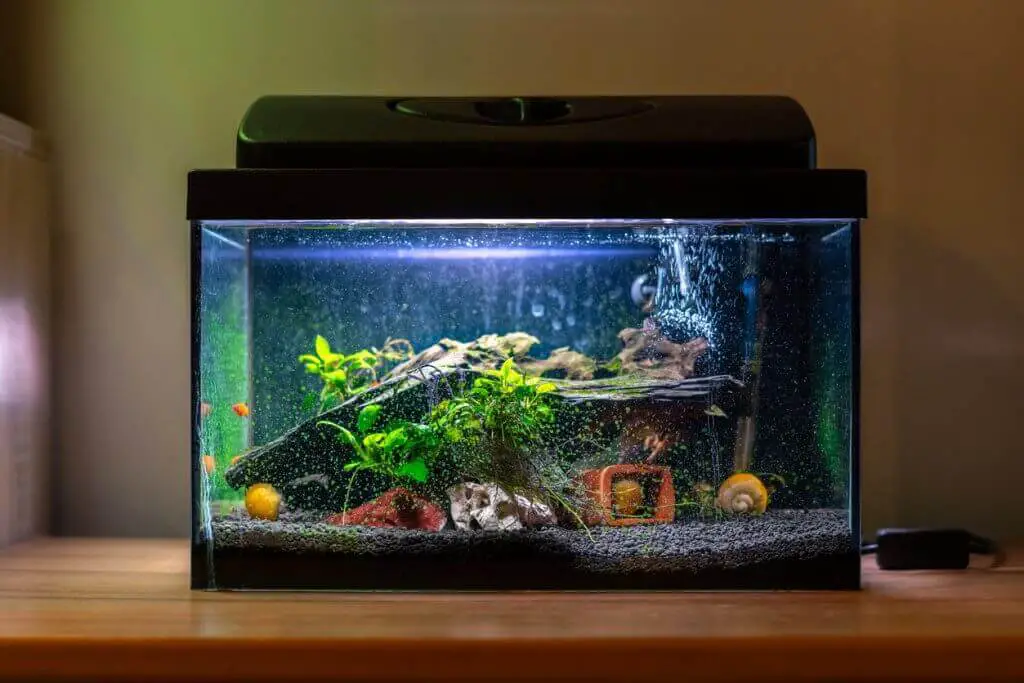The word Biotope in Ecology means ‘the area of a habitat associated with a particular ecological community’.
A biotope aquarium is an aquarium that is setup to imitate a natural habitation. The idea is to move toward the reproduction of a biotope, i.e. to try to associate plants and fish of the similar origin and having the same requirements. It is obviously not possible to recreate in an aquarium the conditions which exist in a river or a brook but to try to approach some by carefully choosing the essentials the decoration and the population.
Representation of a Particular Environment
A Biotope is a region that has particular environmental conditions and a native population of plants and animals. A single stream or lake may include numerous biotopes. For instance, a stony riffle in a stream may be one biotope while a nearby silt-bottomed pool on the same stream may be a dissimilar biotope. On the other hand, the same biotope may occur in many streams in an area where all rocky riffles or silt-bottomed pools support the same community of plants and animals.
Biotope Aquariums are planned to be a representation of a specific aquatic system or place. These tanks may stand for a black water river from South America, an African lake or, an Asian stream. Plants, substrate and other decorations are select to represent those elements found in the natural environment.
Biotope Aquariums World made a big splash in the aquarium world a little more than 10 years ago. These tank designs resemble a photo of a real natural place. The plants are arranged so the symbolize the real place. They can be based on a large scale natural place, such as mountains, scaled down and represented by plants or wood. Or it can be a 1:1 representation, like a small nook of moss and ferns by a forest stream, represented by moss and ferns in the aquarium. These aquariums can be very similar to and are often compared to Japanese gardens. The Nature Aquarium World system also brought the use of shrimp as algae controllers, such as the Amano shrimp, into widespread use.
Why Biotope?
There are many good reasons for setting up an aquarium that tries to simulate the natural habitat of fishes. The foremost is probably from an ecological perspective. With the destruction of the tropical rain-forests worldwide it is essential to preserve the native surroundings of our fish before they vanish forever.
Tropical fish interacting in their natural waters are totally different than the community set up we are all use to. This leads to the second reason, with all the advances in aquatic technology maintaining such a tank is now easier than ever and obtaining the proper species whether fish or plants is usually not difficult either.
Another reason is just for the challenge. Most of us at one time or another get bored and start to look for something new, why not try a Biotope? There is already a growing following in the “mini reef” field with some specializing in specific sections of reefs. We can do the similar with fresh water!
Stuff Used
The biotope aquariums are highly cultivated, heavily planted tanks that usually really on high lighting, a lot of equipment, and fertilizers. The use of CO2 for maximum plant growth is a major factor in these types of aquariums. These aquariums are blossoming. These aquariums are carefully intended. Drawings are often used to present the tank planting arrangement before it’s planted. Classic schools of thought in art architecture are incorporated into the designs. As much care is taken in tending these tanks once they’re planted. They need a lot of pruning and care. Specialized tools, often improvised, are used to help tend these underwater gardens.
It simply uses flora and fauna from a particular region. The fish, plants, water chemistry, and equipment are alike to those that can be found in an exact natural setting. These aquaria tend to look very natural and are worth the effort.
Compatibility Issues
Always ensure compatibility! Some species from a specific environment are not suitable tank mates. For example, the Peacock Bass will chomp tiny tetras because they are their foodstuff in their natural habitat.
The biotope aquarium can be customized by adding up species from different areas that have similar water necessities.
Most biotope aquariums are not precise. The aquarist does not need to slavishly reproduce every feature of a biotope to provide a natural home for the inhabitants of a biotope aquarium. Many features of natural biotopes may be undesirable in an aquarium. On the other hand, features that distinguish a particular biotope from other biotopes should be represented in the biotope aquarium.
Some typical inaccuracies are:
- Including species from a common region that do not inhabit the same biotope.
- Including specimens that are related to native plants or animals but are hybrids, inbred strains or horticultural varieties not found in nature.
- Failing to represent the physical conditions of the biotope (for example, water color in a black water stream biotope aquarium).
- Including species from different habitats to fulfill an aquarist need, such as algae eaters or plants that grow well in low light.


